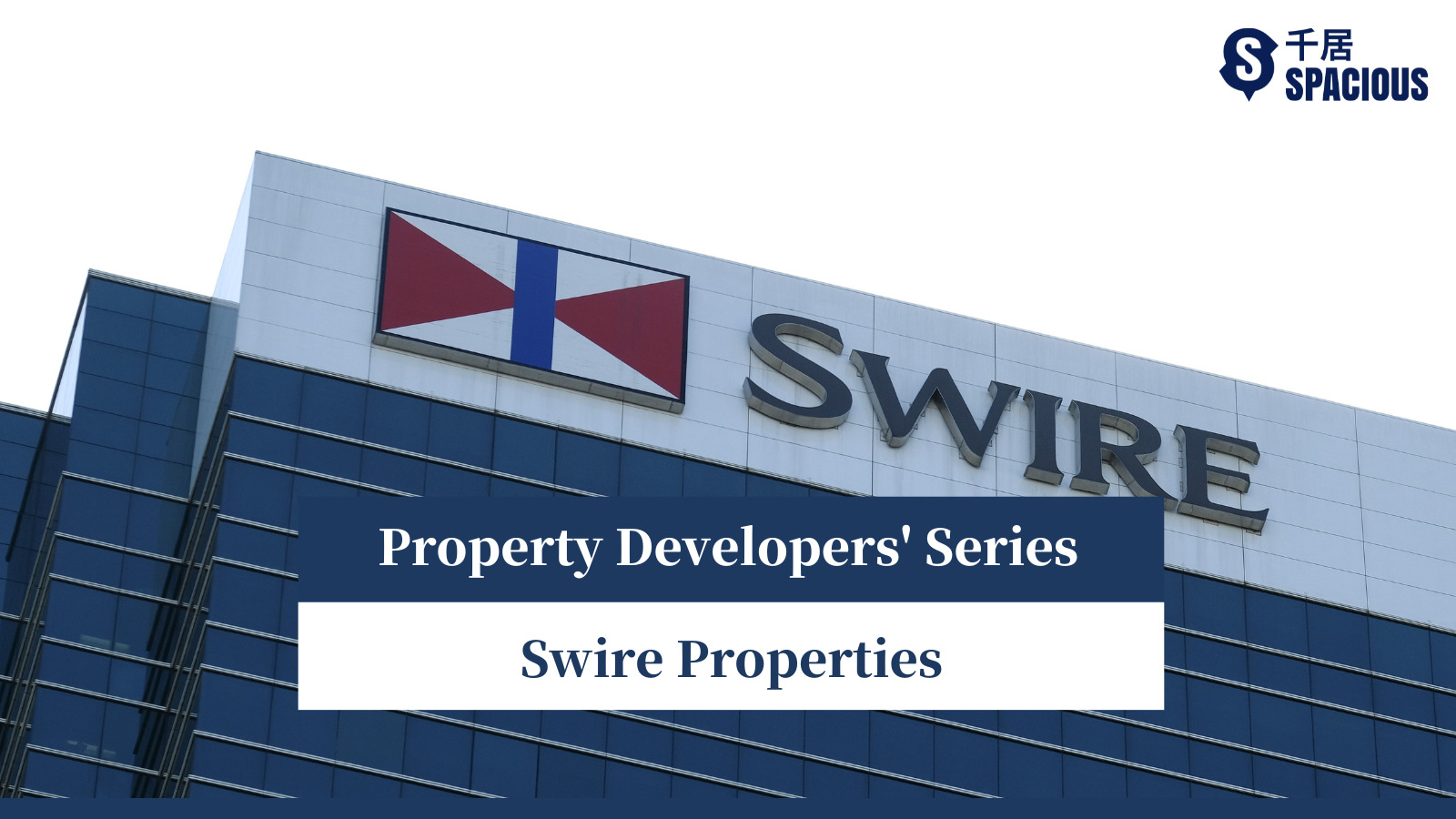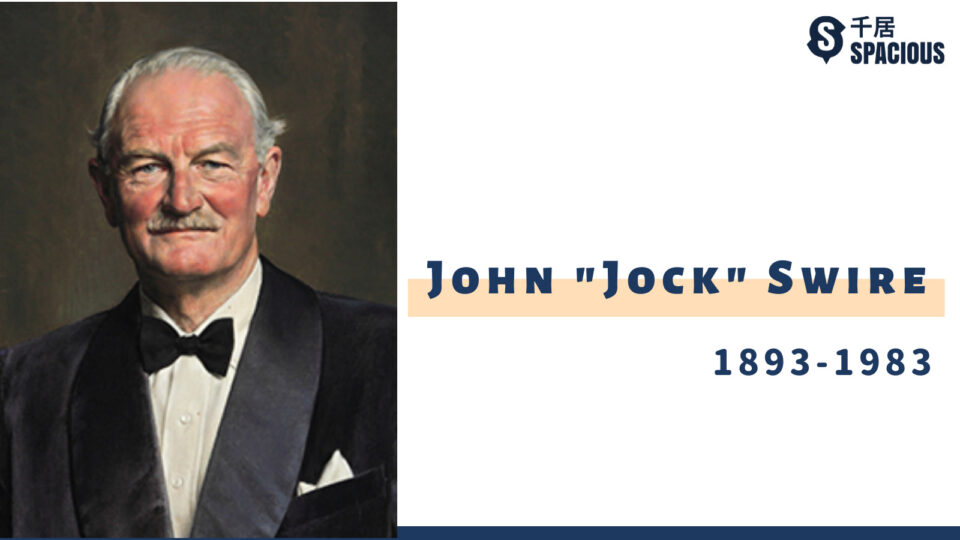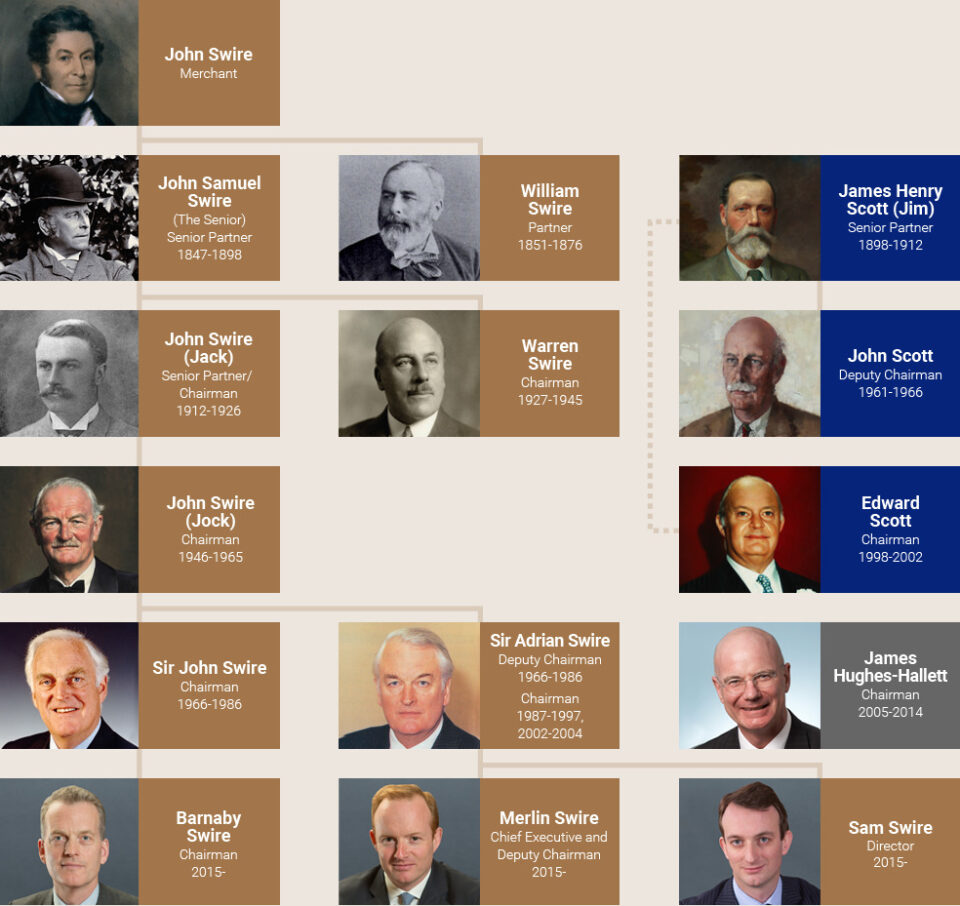
While Hong Kong’s well-known developers are mostly Chinese-funded, Swire Group’s subsidiary, Swire Properties, are among the few British developers that have stood the test of time.
Swire Properties’ residential projects are not numerous, but they are known for quality in terms of locations, layouts, building materials, facilities, and management. Each time the developer launches a project, it attracts a lot of buyers.
As a long-established developer for around two centuries, how did Swire achieve this? Is the building quality as good as how it was claimed to be? Let’s explore the history of the Swire Group.
Jump to: Swire History | Swire Family | Building Quality | Residential Portfolio
The Swire History
Starting as a Garment Company
The parent company of Swire Group is called John Swire & Sons. The company was founded in 1816 by John Swire, who was only 23 years old at the time. Initially, it was a textile import and export trading company located in Liverpool, England.
John Swire was from a family of cloth merchants in Yorkshire, England. In the early 19th century, Liverpool’s thriving re-export trade and rapid population and economic growth were due to its strategic coastal location.
At the same time, the British East India Company, which had a monopoly on Indian imports and exports, was dissolved by the British government in 1813. Seeing the potential for small businesses in Liverpool, John Swire left his hometown and set up his own company in Liverpool.
When John Swire & Sons was first established, it mainly engaged in import trade, starting with importing bark (used for dyeing cloth) and raw cotton from the United States and gradually expanding to importing flour, straw, industrial turpentine and tar. The company also imported coffee, spices, sugar, and rum from the West Indies.
Although John Swire is the founder of Swire, the soul of the brand is probably his eldest son, John Samuel Swire. John Swire passed away in 1847 and the company was inherited by his eldest son John Samuel Swire (1825-1898) and his second son William Hudson Swire (1830-1884).
Due to poor health of the second son, the company’s business was mainly run by the eldest son. When he took over the company at the age of 22, John Samuel Swire’s sharp business acumen was enough to make the company a major multinational corporation in the following decades with businesses all over the world.
Find or sell properties on Spacious
Establishing “Butterfield & Swire” in the Qing dynasty

After taking over, John Samuel Swire saw the opportunity in the Australian Gold Rush and in 1855, he established “Swire Bros” in Melbourne, specializing in the import of various goods such as wire mesh, cement, olive oil and Heineken beer, laying the foundation for Swire’s future expansion and no longer being limited to textile-related trade.
In 1858, the Qing dynasty government was defeated in the Second Opium War and signed the Treaty of Tianjin with the British and French Allied forces, which opened the port of Shanghai.
Swire immediately expanded its business to Chinese goods. In 1861, the Civil War broke out in the United States, making Swire realize that the import of American cotton was over, but he had an opportunity to invest in steamships, which gave him the possibility to operate overseas shipping and prompted him to go to Shanghai in 1866.
In just one year, Swire became a shareholder of the Blue Funnel Steamship Company, acquired the Chinese agency that was originally cooperating and established “Butterfield & Swire” (later known as “Swire Pacific”) with wool merchant Richard Shackleton Butterfield in Shanghai. Swire Pacific engaged in tea and silk trade, imported cotton and wool from the UK, and later also served as the Eastern agent of many British businesses, one of which was insurance.
Expanding Business Scopes
In 1870, as Swire Pacific continued to flourish, it established branches in Yokohama, Japan, New York, USA, Manchester, UK, and Hong Kong in addition to Shanghai, and its headquarters moved from Liverpool to London.
Swire Pacific continued to develop its shipping business, operating cargo ships on the Yangtze River, and controlled the trans-shipment base between the West.
In the following decades, Swire Pacific developed shipbuilding, sugar and paint manufacturing, and other businesses, becoming a major player alongside other British-invested old firms like Jardine Matheson, and its shipyard also competed with another British-invested company, Whampoa Dock.
Find or sell properties on Spacious
Moving Headquarters to Hong Kong

Swire Pacific’s subsequent development was smooth, until the outbreak of the Pacific War in the 1940s, when the company’s assets in the Far East fell into the hands of the Japanese army and its Hong Kong sugar factory and shipyard were destroyed by the Americans.
After the war, under the leadership of then-chairman John Kidston “Jock” Swire, the fourth-generation descendant of the Swire family, the company gradually rebuilt its business.
However, like other British-invested firms of the time, Swire lost confidence in the prospects of the mainland and therefore chose to relocate its trans-shipment base from Shanghai to Hong Kong, where it founded the “Swire & Maclaine Ltd.”
As the Chinese government reclaimed coastal and inland navigation rights after the war, Swire was forced to end its coastal and Yangtze River shipping trade in China. In 1953, Swire Pacific ended all business in China and established its Far East headquarters in Hong Kong, marking an important milestone for the brand in Hong Kong.
Acquiring “Dachang Real Estate”
In addition to developing shipping and entrepot trade, Swire also actively competed for aviation agency rights in Hong Kong, covering both sea and air. In 1948, Swire acquired the agency rights of three international airlines in Hong Kong and also acquired the local airline Cathay Pacific. This helped pave the way for the company’s transition in the 1970s.
Swire’s entry into the real estate industry may have been later than many developers. During the 1967 riots and a downturn in the housing market, Swire did not take advantage of the low prices like other developers. In fact, Swire had already purchased a large amount of land during the construction of sugar factories and shipyards.
In the 1970s, when the housing market gradually recovered, Swire established Swire Properties Ltd. to enter the real estate industry and used the land reserves for property development.
Throughout its history, Swire has been successful in acquiring leading companies in the industry. In the Hong Kong real estate industry, Swire first cooperated with China’s “Dachang Real Estate” and later acquired the small property company “Kenning Real Estate” and eventually merged with Dachang Real Estate, acquiring all of its shares. This helped establish a solid foundation for Swire Properties in the local market and steadily develop in the following decades.
Find or sell properties on Spacious
The Swire Family

The Swire family has been at the helm of the John Swire & Sons, the parent company of the Swire Group, for over two centuries, adhering to the principles behind the company’s name.
The group’s chairman is primarily appointed from among the descendants of the Swire family, or the Scott family. The first Scott, James Henry “Jim” Scott, was actually the right-hand man of John Samuel Swire.
He and Swire met through the founders of the steamship company that Swire originally invested in. Like Swire, Henry Scott had a keen business sense and provided valuable advice to the Swire Group. Het took over the company after John Samuel Swire’s death, and retired 14 years later, with John “Jack” Scott, one of John Samuel Swire’s sons, taking his place.
The current chairman of Swire Group is Barnaby Nicholas (1964- ) Swire while Merlin Swire (1973- ) becomes Chief Executive and Deputy Chairman of the Swire group.

Building Quality
Many buyers in Hong Kong would agree that the properties developed by Swire Group are of high quality. This is particularly true for their flagship development, Taikoo Shing, a “blue chip” estate in Hong Kong, known for its prime location, high-quality design, materials, amenities and excellent management.
Swire’s residential projects focus on high-end properties and luxury homes in established neighborhoods such as Mid-levels and The Peak, rather than smaller units or properties in less developed areas.
The majority of units measure between 400-800 sq. ft., which is generally larger than the typical 200-300 sq. ft. units built by other developers.
Swire’s reputation for high-quality properties is attributed to the company’s focus on quality over quantity and its two-century-old legacy as being a successful British-owned business.
Find or sell properties on Spacious
Residential Portfolio
| Residential Projects | District | min. sq. ft. |
|---|---|---|
| 3, Coombe Road | The Peak | 4,374 |
| Greenfields | Yuen Long | 605 |
| BELAIR MONTE | Fanling | 619 |
| Tai Koo Shing | Quarry Bay | 585 |
| The Albany | Central | 1660 |
| Star Crest | Admiralty | 729 |
| Robinson Place | Mid-levels West | 893 |
| Sea Cliff Mansions | Repulse Bay | 612 |
| Beacon Heights | Yau Yat Chuen | 807 |
| Village Gardens | Yau Yat Chuen | 614 |
| Westlands Court | Quarry Bay | 375 |
| The Floridian | Quarry Bay | 664 |
| Sunningdale | Prince Edward | 433 |
| Les Saisons | Shau Kei Wan | 700 |
| The Orchards | Quarry Bay | 790 |
| Lei King Wan | Sai Wan Ho | 426 |
| Westlands Gardens | Quarry Bay | 839 |
| Parkvale | Quarry Bay | 535 |
| Island Place | North Point | 597 |
| Island Lodge | North Point | 800 |
| Ocean Shores | Tiu Keng Leng | 530 |
| TUNG CHUNG CRESCENT | Tung Chung | 715 |
| SEAVIEW CRESCENT | Tung Chung | 679 |
| Eredine | The Peak | 2,786 |
| Rocky Bank | Deep Water Bay | 2,586 |
| 36, Island Road | Deep Water Bay | 2,795 |
| Green Jade | Lantau Island | 3,500 |
| 5 Star Street | Wan Chai | 676 |
| Eight Star Street | Wan Chai | 431 |
| Azura | Mid-levels West | 1,261 |
| Argenta | Mid-levels West | 2,112 |
| Arezzo | Mid-levels West | 871 |
| Alassio | Mid-levels West | 581 |
| Opus Hong Kong | Mid-levels East | 4,819 |
| Mount Parker Residences | Mount Parker | 1,242 |
| Dunbar Place | Ho Man Tin | 1,208 |









